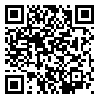Volume 7, Issue 3 (11-2020)
Journal of Spatial Analysis Environmental Hazards 2020, 7(3): 79-94 |
Back to browse issues page
Download citation:
BibTeX | RIS | EndNote | Medlars | ProCite | Reference Manager | RefWorks
Send citation to:



BibTeX | RIS | EndNote | Medlars | ProCite | Reference Manager | RefWorks
Send citation to:
Jahdi R, Darvishsefat A A, Badripour H. Wildfire risk and exposure modeling using geographic information system in Khalkhal and Kowsar municipalities. Journal of Spatial Analysis Environmental Hazards 2020; 7 (3) :79-94
URL: http://jsaeh.khu.ac.ir/article-1-2987-en.html
URL: http://jsaeh.khu.ac.ir/article-1-2987-en.html
1- Department of Natural Resources Engineering, Faculty of Agriculture and Natural Resources, University of Mohaghegh Ardabili , roghayeh.jahdi@uma.ac.ir
2- Department of Forestry, Faculty of Natural Resources, University of Tehran, Karaj, I.R. Iran.
3- Forests, Rangelands and Watershed management Organization (FRWO)
2- Department of Forestry, Faculty of Natural Resources, University of Tehran, Karaj, I.R. Iran.
3- Forests, Rangelands and Watershed management Organization (FRWO)
Abstract: (7254 Views)
Wildfires have proven to cause considerable damage to natural environments in Ardabil in the last years, and the prevalence of such events is anticipated to increase in the future. Fine scale wildfire exposure and risk maps are fundamental to landscape managers and policy makers for prevention, mitigation and monitoring strategies. In this paper, we provided 100 m resolution wildfire risk and exposure metric raster grids for the fire-prone municipalities in South Ardabil province corresponding to a fire simulation modeling and a geospatial analysis with a geographic information system, along with complementary historic ignition and fire area data (2005-2018). Fire risk parameters (burn probability (BP), conditional flame length (CFL) and fire size (FS)) were generated with FlamMap Minimum Travel Time (MTT) algorithm considering fire weather conditions during the last 14 wildfire seasons. Moreover, we estimated fire potential index (FPI) to spatially analyze where large fires likely initiate. Average BP, CFL and FS ranged from 0.00007 to 0.0025, 0.05 to 1.6 m, and 54.7 to 360.3 ha, respectively, that highlighted a large variation in the fire exposure factors in the study area. The calculated FPI showed two major areas with the highest values, where historic ignitions were high, and where large areas of faster burning fuels were present. The results of this study can be useful for analyzing potential wildfire risk and effects at landscape scale, evaluating historical changes and future trends in wildfire exposure, as well as for determining fuel treatment strategies to mitigate wildland fire risk.
Type of Study: Research |
Subject:
Special
Received: 2019/06/1 | Accepted: 2020/05/1 | Published: 2021/02/20
Received: 2019/06/1 | Accepted: 2020/05/1 | Published: 2021/02/20
Send email to the article author
| Rights and permissions | |
 | This work is licensed under a Creative Commons Attribution-NonCommercial 4.0 International License. |






